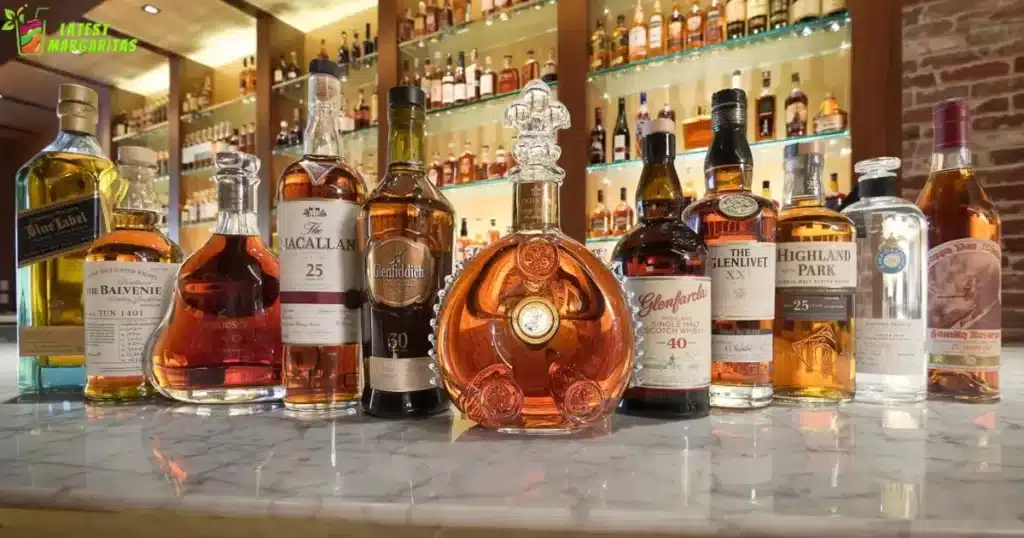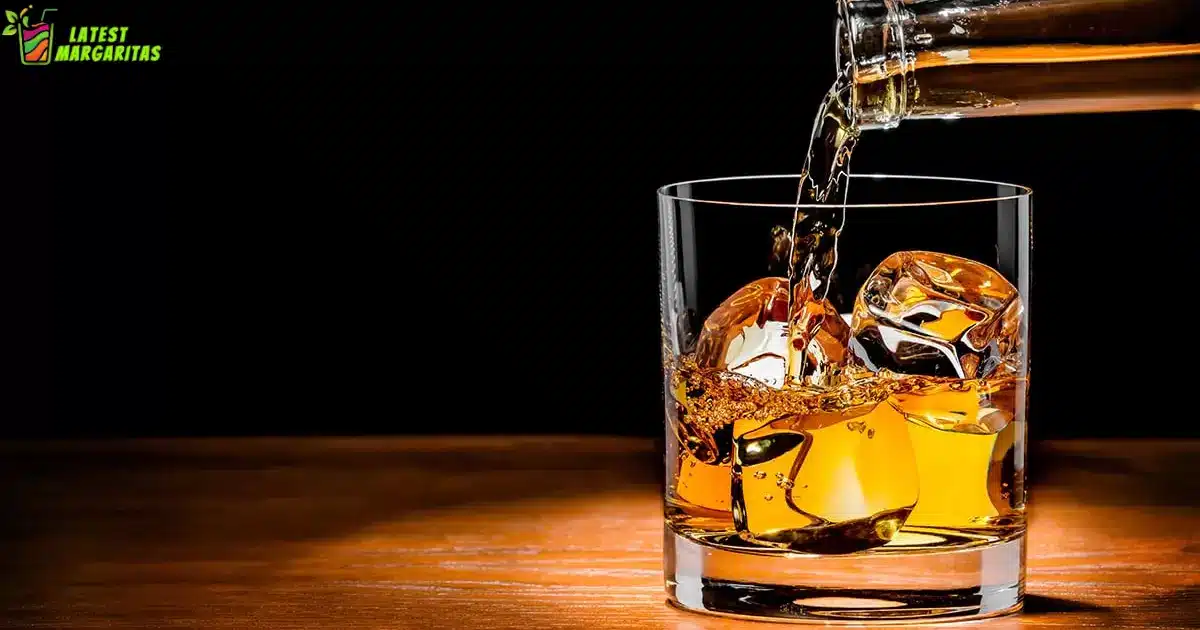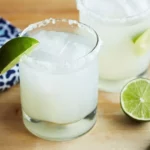A margarita is a popular cocktail made with liquor. The main liquor used in a traditional margarita is tequila. It’s typically mixed with lime juice and orange liqueur, like triple sec, to create a tangy and refreshing drink. The liquor in a margarita gives it its signature kick and flavor.
Wondering what liquor is in a margarita? Well, the key liquor in a margarita is tequila. This iconic cocktail combines tequila with lime juice and orange liqueur, like triple sec, to create its delicious and tangy taste. So, when you sip a margarita, you’re savoring the unique blend of these flavorful ingredients.
The interesting history of the margarita’s liquor is believed to have originated in Mexico in the 1930s or 1940s, where tequila, the primary liquor in margaritas, was abundant. Though its precise origins are still debated, people worldwide have come to love its delightful combination of tequila, lime, and orange liqueur.
The Key Liquor: Tequila
Tequila is the star of the show when it comes to margaritas. This Mexican spirit has a rich history dating back centuries. It is made from the fermented and distilled juices of the blue agave plant. Tequila comes in various types, including blanco (silver), reposado (rested), and añejo (aged).
Each type offers a distinct flavor profile, with blanco being more vibrant and herbal, reposado showcasing a mellow oakiness, and añejo boasting a complex and smooth character. The use of tequila in margaritas is a nod to its Mexican heritage and its ability to infuse the cocktail with a robust and earthy essence.
The Ingredients of a Margarita
A classic margarita consists of three primary ingredients: tequila, lime juice, and orange liqueur. Lime juice provides the cocktail with its signature tartness and zesty brightness. It balances the richness of the tequila and enhances the overall refreshment.
Orange liqueur, often in the form of triple sec, adds a hint of sweetness and orange flavor to the mix. The combination of these ingredients creates a harmonious blend of sweet, sour, and boozy notes that make the margarita an irresistible drink.
To give you a clearer picture of the typical proportions used in a margarita, here’s a simple breakdown.
| Ingredient | Proportion in Margarita |
| Tequila | 2 oz (60 ml) |
| Lime Juice | 1 oz (30 ml) |
| Orange Liqueur | 1 oz (30 ml) |
The Flavor Profile
The classic margarita boasts a well-balanced and refreshing flavor profile. It offers a delightful combination of tequila’s earthy and agave notes, the zingy freshness of lime juice, and the subtle sweetness of orange liqueur. The result is a cocktail that tantalizes your taste buds with a citrusy punch, a touch of sweetness, and a warming tequila finish. The salted rim of the glass enhances the experience by providing a contrasting saltiness that elevates the overall flavor.
The beauty of the margarita lies in its versatility. You can adjust the proportions of the ingredients to suit your taste preferences. Some like it stronger with extra tequila, while others prefer a sweeter variation with more orange liqueur or a twist of other fruit flavors.
Variations and Customization
While the classic margarita is cherished worldwide, there is no shortage of creative variations and customization options to explore. Beyond the traditional tequila-based margarita, you can experiment with different liquors such as mezcal or even flavored liqueurs to add unique twists to your cocktails. Mezcal, with its smoky and earthy character, can bring a distinct dimension to your margarita experience.
Customization knows no bounds when it comes to margaritas. You can incorporate fresh fruit purees like strawberry, mango, or pineapple for a fruity delight. Adjust the sweetness by using agave nectar or honey instead of traditional simple syrup. And don’t forget to explore the world of rimming salts, from classic sea salt to chili-lime or Tajín, to add an extra layer of flavor and complexity to your margarita.
Is margarita mix a liqueur?
No, margarita mix is not a liqueur. Margarita mix is a non-alcoholic beverage mixer specifically designed to make preparing margaritas easier. It typically consists of a blend of ingredients like lime juice or lime flavoring, sweeteners, and sometimes other citrus flavors. To make a margarita, you would typically mix margarita mix with a liquor, usually tequila, and sometimes triple sec or orange liqueur, along with ice.
On the other hand, various ingredients like fruits, herbs, spices, or nuts sweeten and flavor alcoholic spirits called liqueurs. They use these to add flavor and sweetness to cocktails but can also be enjoyed on their own. For example, triple sec, a type of liqueur, is often used in margaritas to provide sweetness and orange flavor.
Alternative Of Liquor In Margaritas
If you’re looking for non-alcoholic alternatives to liquor in margaritas, there are several options to consider to create a refreshing mocktail version of this classic drink. Here are some alternatives.
Virgin Margarita: This is a non-alcoholic version of the classic margarita. Simply omit the tequila and orange liqueur, and focus on lime juice and sweeteners like simple syrup or agave nectar. You can also use sparkling water for fizz.
Limeade Margarita: Use limeade concentrate as the base, dilute it with water or sparkling water, and add a touch of orange juice for sweetness. Garnish with lime slices and serve over ice.
Frozen Fruit Margarita: Blend frozen fruits like strawberries, mangoes, or pineapples with lime juice, a sweetener of your choice, and ice. This creates a fruity, slushy mocktail that captures the essence of a margarita.
Coconut Water Margarita: Replace the tequila with coconut water for a refreshing twist. Combine coconut water with lime juice and a sweetener, and serve over ice.
Minty Lemonade Margarita: Substitute lime juice with lemon juice and add fresh mint leaves for a citrusy, minty mocktail. Sweeten with simple syrup or honey.
Different Types Of Tequila Used In Margaritas

There are several types of tequila that can be used in margaritas, each offering distinct flavor profiles. The choice of tequila can significantly impact the taste of your margarita. Here are the different types of tequila used in margaritas.
Blanco (Silver) Tequila: This is unaged tequila, known for its crisp and vibrant flavor. It has the purest agave taste and is often used in margaritas to provide a fresh and earthy character.
Reposado Tequila: Reposado means “rested” in Spanish. This tequila is aged in oak barrels for a few months to a year, giving it a smoother and slightly oaky taste. It adds complexity to a margarita without overwhelming the other flavors.
Añejo Tequila: Añejo tequila is aged for at least one year and up to three years in oak barrels. It has a rich and mellow flavor with notes of caramel and vanilla. Añejo tequila is a premium choice for a more refined margarita experience.
Joven (Gold) Tequila: Joven tequila is a blend of blanco and aged tequilas. It has a balance of the clean agave taste and the complexity of barrel aging. It can be a versatile option for margaritas, offering a bit of both worlds.
Extra Añejo Tequila: This is an ultra-aged tequila, aged for over three years. It has a deep and complex flavor profile with pronounced notes of oak, spice, and sweetness. Extra añejo tequila is a premium choice for those looking for a luxurious margarita experience.
Conclusion
The liquor in a margarita, typically tequila, is the cornerstone of this beloved cocktail’s identity. Its rich and complex flavors, combined with lime juice and orange liqueur, create a harmonious symphony of taste sensations. Tequila not only adds a distinctive kick but also pays homage to the cocktail’s Mexican heritage, adding depth and authenticity to each sip.
While the classic margarita remains a timeless favorite, the world of mixology offers endless opportunities for creativity and customization. Whether you opt for alternative spirits like mezcal or explore various fruit infusions and sweeteners, the liquor’s role in a margarita provides a canvas for crafting personalized and unique concoctions.
Whether you enjoy the traditional tequila-based margarita or venture into the realm of mocktails and alternative ingredients, the liquor, or its absence, allows for a wide spectrum of flavor experiences. Ultimately, the importance of liquor in a margarita lies in its ability to transform a simple mixture of ingredients into a beloved cocktail that continues to delight taste buds around the world. Cheers to the enduring allure of the margarita!
FAQs
Can I use a different liquor instead of tequila in a margarita?
While tequila is the traditional choice, you can experiment with other spirits like mezcal for a unique twist on the classic margarita.
What are some popular variations of the margarita cocktail?
Popular variations include the strawberry margarita, mango margarita, and spicy margarita, which incorporate additional fruit flavors or spices.
Are there non-alcoholic alternatives to margaritas?
Yes, you can create non-alcoholic mocktail versions of margaritas using ingredients like lime juice, sweeteners, and sparkling water.
Are there health considerations when consuming margaritas?
Margaritas contain alcohol and calories, so it’s essential to drink them responsibly. Excessive alcohol consumption can have health risks.





